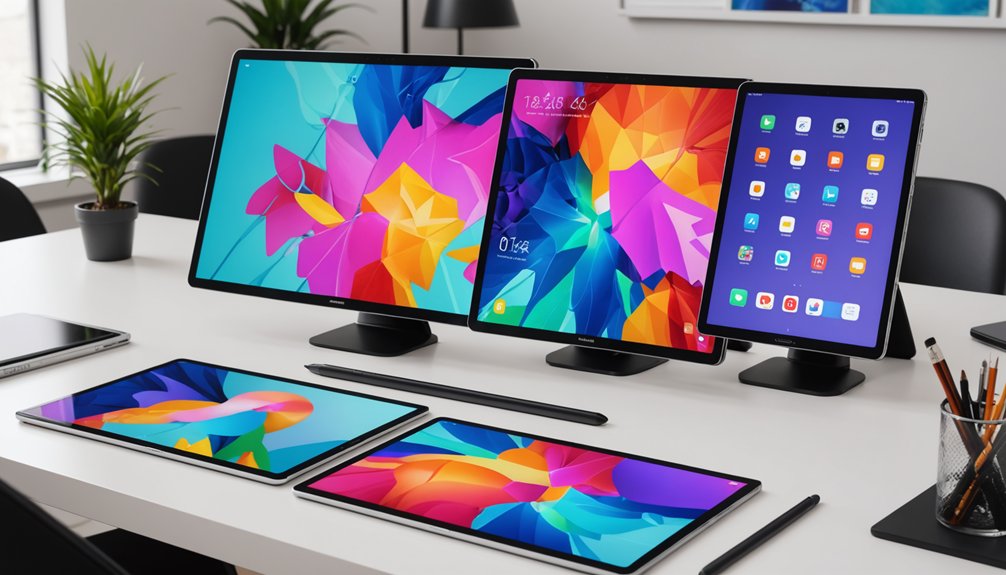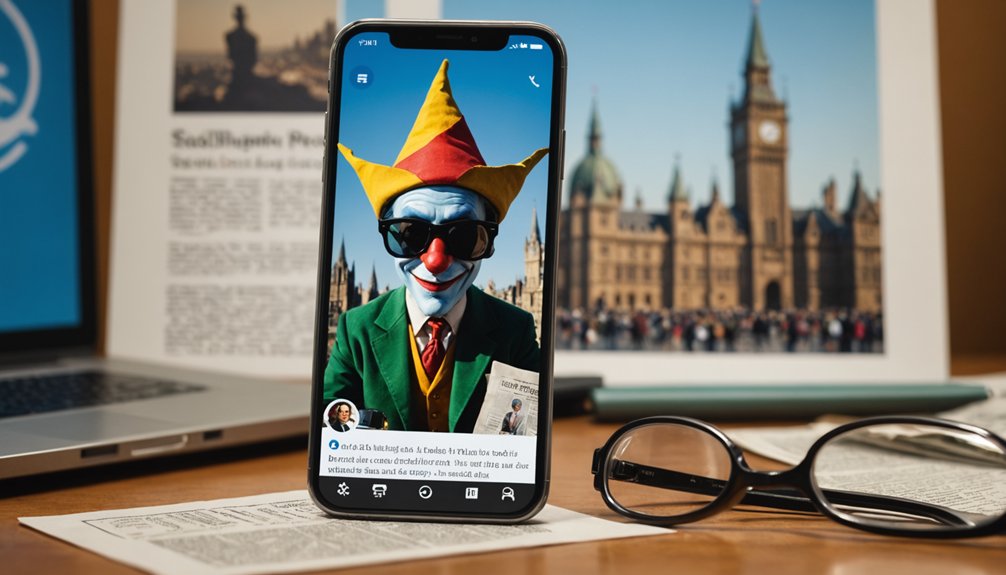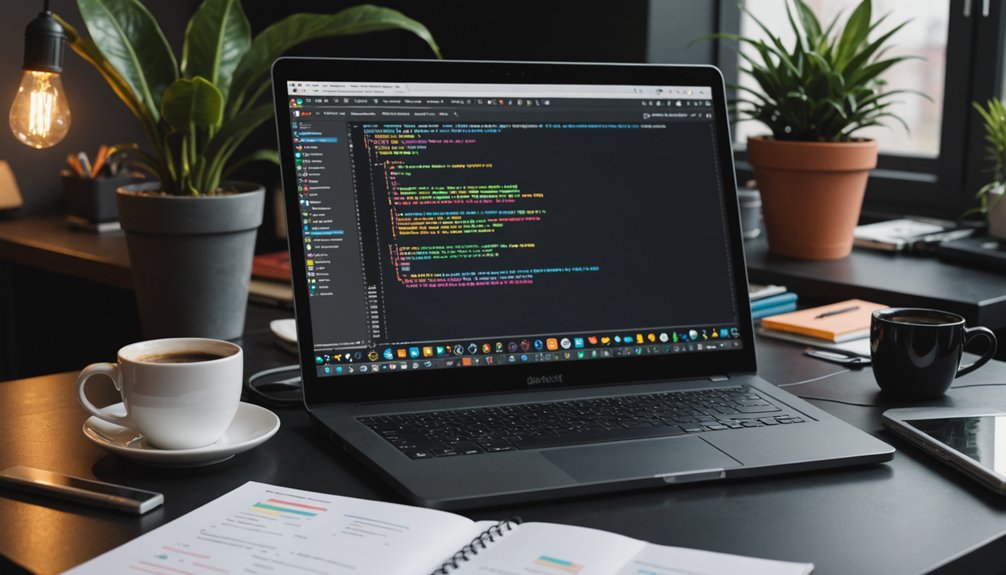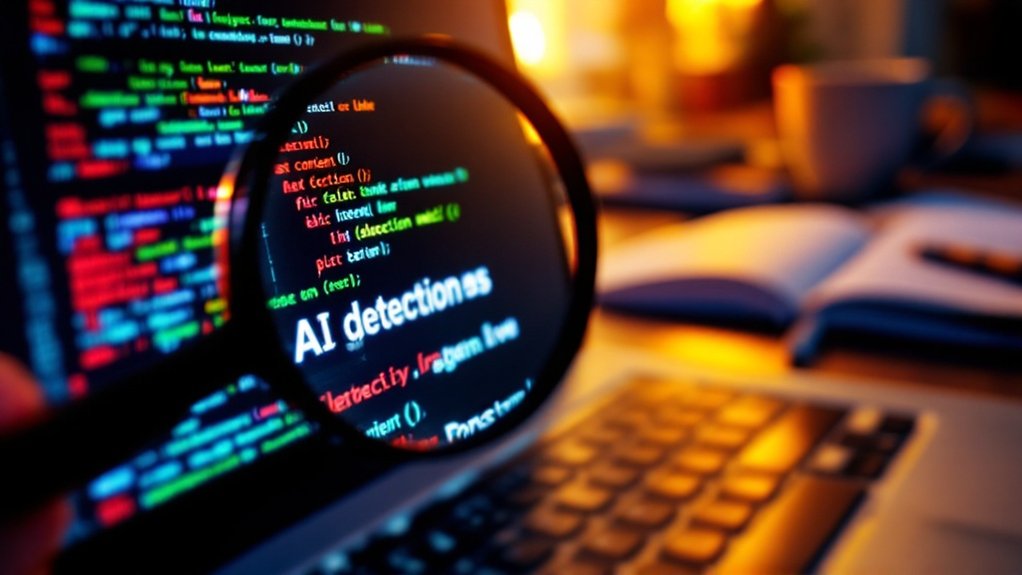Large-screen tablets are getting massive in 2025. The Meswao MES-B3 leads the pack with a whopping 15.6-inch display, though its resolution disappoints. Samsung's Galaxy Tab S10 Ultra offers a better experience with its 14.6-inch Dynamic AMOLED screen and 120Hz refresh rate. Apple's iPad Pro counters with a 13-inch OLED display and superior software integration. Xiaomi and OnePlus are in the game too. Weight remains a trade-off—bigger screens mean heavier devices. The details below reveal which giant is actually worth carrying around.

While tablet manufacturers have historically focused on portability, 2025's lineup of large-screen tablets proves bigger is definitely better. These massive slates are changing how we think about tablets. No longer just oversized phones. They're legitimate workstations now. Similar to deep tech innovations, these tablets represent significant engineering achievements in display technology.
Leading the pack is the Samsung Galaxy Tab S10 Ultra with its monstrous 14.6-inch Dynamic AMOLED 2X display. It's gorgeous. The 120Hz refresh rate makes everything buttery smooth, and that MediaTek Dimensity 9300+ processor handles whatever you throw at it. Seven years of security updates? Not too shabby for an Android device.
Apple's iPad Pro with M4 chip isn't far behind at 13 inches. The Ultra Retina XDR OLED display is, frankly, ridiculous. Apple's walled garden approach to software actually pays off here—iPadOS is lightyears ahead of Android for tablet optimization. Shocking, I know.
Then there's the dark horse: Meswao MES-B3. At 15.6 inches, it's technically the largest non-foldable tablet available. Big whoop. The MediaTek Helio G99 processor is adequate but nothing special, and the 1920 x 1080 resolution is downright disappointing on a screen that size. The tablet offers decent portability despite its size, with battery life estimates up to 10 hours. But hey, it's big!
Xiaomi's Pad 6 Max 14 exists too. That's about all we understand. Details are scarce. Similar to how REST APIs handle data requests, the tablet manages resource-intensive tasks efficiently.
These behemoths aren't exactly one-handed devices. The Tab S10 Ultra weighs 1.58 pounds without a keyboard. The Meswao? A hefty 2.43 pounds. Your wrists will hate you.
Resolution matters on screens this size. Samsung's 2960 x 1848 resolution delivers crisp 240 ppi density. The OnePlus Pad 2 offers an impressive 144Hz refresh rate that makes scrolling and gaming exceptionally smooth. Meswao's FHD resolution looks pixelated in comparison.
Battery life remains the elephant in the room. Bigger screens mean bigger power demands.
For productivity enthusiasts, the Microsoft Surface Pro 9 running Windows 11 offers a true laptop replacement experience. Different approach, same goal.
The bottom line? Tablets are getting massive in 2025. Whether that's progress or just screen inflation remains to be seen.
Frequently Asked Questions
How Long Is the Battery Life on Large-Screen Tablets?
Battery life on large-screen tablets varies widely.
High-performance models like the Samsung Galaxy Tab S10 Ultra and iPad Pro clock in around 9-10 hours.
The Galaxy Tab S9 FE Plus impresses with over 18 hours—pretty exceptional.
Budget options sometimes last longer; the Galaxy Tab A7 manages 13+ hours.
Bigger screens drain more power, no surprise there.
Processor efficiency and battery capacity matter too.
Gaming? Expect that battery to plummet fast.
Can Large Tablets Effectively Replace a Laptop?
Large tablets can replace laptops for many users—but not everyone. They excel at portability and battery life, no doubt.
Touch screens? Pretty sweet for creative work. But limitations exist. Multitasking capabilities still lag behind laptops. Professional software options? Limited. And those tablet keyboards? Not always ergonomic.
Bottom line: depends entirely on your workflow. Perfect for some, frustratingly inadequate for others.
Which Tablet Accessories Work Best With Oversized Screens?
For oversized tablet screens, Bluetooth keyboards like the Logitech K380 offer productivity without bulk.
Portable monitors and lapdocks—UPerfect and Asus ZenScreen Go—extend screen real estate dramatically.
Styluses matter too; Apple Pencil Pro and Samsung's S Pen provide precision for that massive canvas.
Don't forget power. Big screens drain batteries fast. High-capacity power banks are non-negotiable.
Seriously, nothing worse than a dead giant tablet.
Are Large Tablets Suitable for Digital Artists?
Large tablets are digital artists' dream tools. Period. Their expansive screens provide ample canvas space, while high-pressure sensitivity styluses capture every nuanced stroke.
Advanced processors handle memory-hungry art apps without breaking a sweat. The Samsung Galaxy Tab S9 Ultra and iPad Pro with M4 chip? Powerhouses.
Artists benefit from OLED displays with vibrant colors, customizable buttons, and multi-touch capabilities. Not everyone needs this firepower, but for serious creatives—absolute game-changers.
How Much Heavier Are Large Tablets Than Standard Models?
Large tablets typically weigh 25-40% more than standard models. The numbers don't lie.
A standard iPad (9th gen) weighs just 1.05 pounds, while the iPad Pro (7th gen) hits 1.5 pounds – nearly half a pound difference.
For perspective, the Galaxy Tab S9 FE weighs 1.3 pounds versus the S10 Ultra at 1.4.
That extra weight adds up during extended use. Not insignificant.




